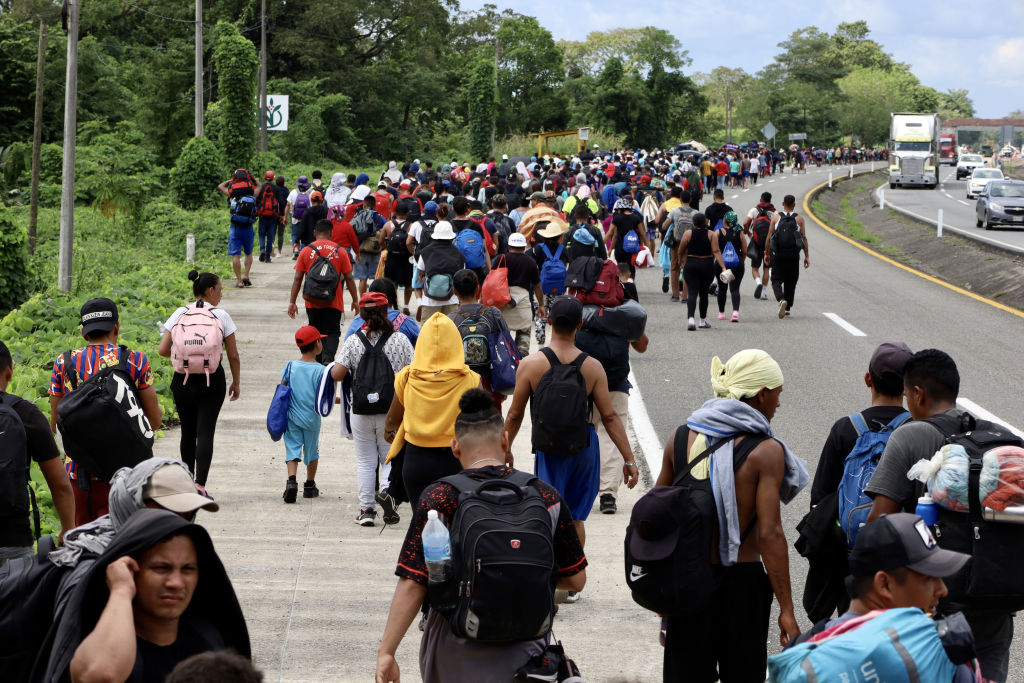U.S.-Mexican Summit Surveys Next Steps on Security
U.S.-Mexican Summit Surveys Next Steps on Security
Mexico's Foreign Secretary Patricia Espinosa traveled to Washington April 29 for a security summit. While the two countries investigate next steps in the bilateral fight against transnational crime, Mexico faces illicit arms trafficking across both its northern and southern borders.
U.S. Secretary of State Hillary Clinton hosts her Mexican counterpart Patricia Espinosa on April 29 in a summit focusing on bilateral cooperation to combat organized crime. It counts as the third by the Merida Initiative High-Level Consultative Group, but the first since a diplomatic hiccup set off by a leaked cable in which the U.S. Ambassador to Mexico Carlos Pascual questioned the efficacy of the Mexican government’s struggle against cartels. Close to the time that Pascual resigned in March, news came to light of a U.S. operation called “Fast and Furious” that aimed to take down cartels by tracking guns smuggled into Mexico. The only problem was that the U.S. Bureau of Alcohol, Tobacco, Firearms, and Explosives lost track of some of those weapons, raising questions about the hands the guns fell into at a time when Mexico faces a brutal drug war that has claimed over 37,000 lives. Now newly leaked cables indicate Mexico may have to look to its southern border as well to stem the illicit influx of weapons, with signs that guns may be flowing in from Central America.
A State Department release about Friday’s meeting reiterated a bilateral “shared commitment” to confronting transnational crime groups. Since its launch in 2008, U.S. Congress appropriated $1.5 billion for Mexico through the end of FY2010 via the security-cooperation pact known as the Merida Initiative. A Congressional Research Service report from February 2011 documents U.S. legislators’ concerns about the slow release of Merida-related funds and reports that just $361.8 million worth of training and equipment was disbursed as of December 2010. Both countries have pledged to continue cooperation, unveiling “Beyond Merida,” in March 2010—a plan that places greater emphasis on community and institution building. As cooperation continues, U.S. assistance to Mexico is expected to drop from $405.6 million in FY2010 to a requested $346.6 million in FY2011 and $328.6 million in FY2012.
The secretaries were expected discuss an ongoing security strategy against a backdrop of ongoing fears about the cartel-related violence in Mexico, revealed most recently by the discovery of mass graves containing the remains of hundreds of victims. With the death toll climbing, Mexico has sought U.S. action to stem the flow of smuggled arms into cartel hands. A new CBS News report finds that the Mexican government retained a New York-based lawyer in November to explore filing civil charges against U.S. gun companies over the damage caused by the weapons flooding across the border. A December 2010 investigation by The Washington Post reported that over 60,000 U.S. guns were seized in Mexico over the course of the prior four years. The Post also found that 11 of the top 12 U.S. gun dealers linked to captured weapons were located in Texas or Arizona. Despite the fact that Mexico faces this challenge at its U.S. border, the U.S. House of Representatives blocked a February measure that would have required U.S. dealers to report multiple sales of semiautomatic rifles greater than .22 caliber with detachable magazines.
Compounding the issue is the fact that American weapons may to be crossing into Mexico across the country’s southern border as well. Cables recently released by Wikileaks and published this month by McClatchy refer to evidence that military weaponry from Central America has fallen into the hands of Mexican crime groups. “The weapons run the gamut from assault rifles to anti-tank missiles, some of which the U.S. supplied during regional conflicts more than two decades ago,” reports McClatchy’s Tim Johnson. “The slippage from military armories occurs regularly.” Cables from 2008 and 2009 link Guatemalan military officials to large-scale weapons trafficking and point to Honduras’ negligent monitoring of weapons depots. As General Douglas Fraser, head of U.S. Southern Command, told U.S. senators in March: “Over 50 percent of the military-type weapons that are flowing throughout the region have a large source between Central American stockpiles, if you will, left over from wars and conflicts in the past.”
What will the next steps be in the bilateral fight against organized crime? Secretary Clinton congratulated the Mexican government for its leadership in the struggle against cartels as she met with Espinosa Friday. But, with Mexico seeking to stamp out the bloodshed plaguing its northern states, it continues to look to the United States to shoulder its weight in terms of stemming the drug consumption and arms trafficking that fuel the violence. Some observers note that the Washington has invested billions of dollars fighting far-flung wars while its neighbor fights a difficult battle. But, in an interview with the National Journal, the Wilson Center's Andrew Selee voiced support for the "Beyond Merida" shift in attention toward institution building during a period when Washington faces lean fiscal times. Says Selee: “I think really our best value-added in the Merida Initiative is training and software and things we can move quickly that help the Mexican government strengthen the rule of law.”
Learn more:
- “U.S.-Mexican Security Cooperation: The Mérida Initiative and Beyond,” Congressional Research Service, February 16, 2011.
- Cable released by Wikileaks alleging that the Honduran government does little to control the flow of U.S.-supplied weapons.
- Another cable ties Guatemalan military officials to arms trafficking to Mexican gangs.
- The Washington Post’s investigative report on trafficking of U.S. arms into Mexico.







